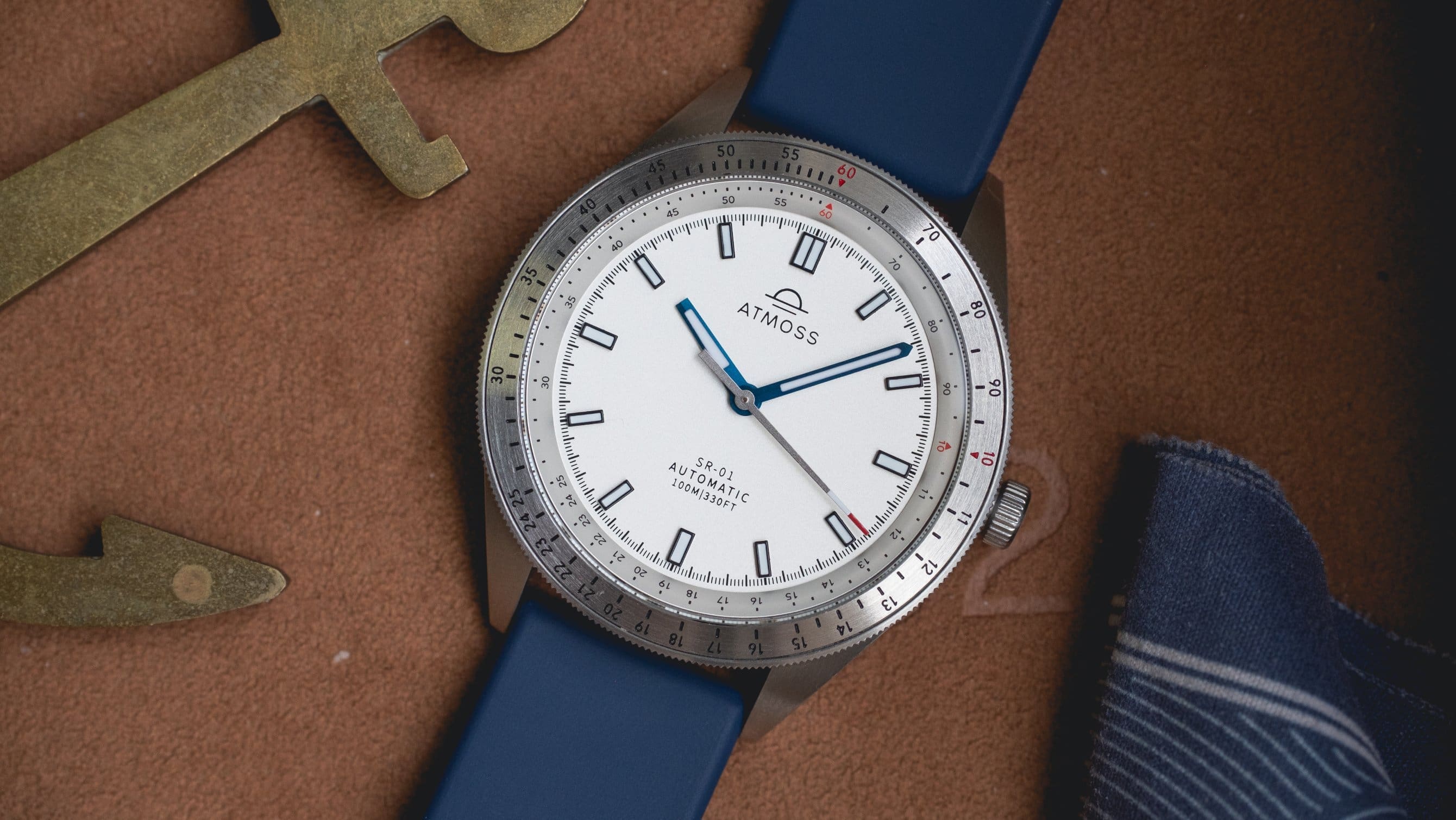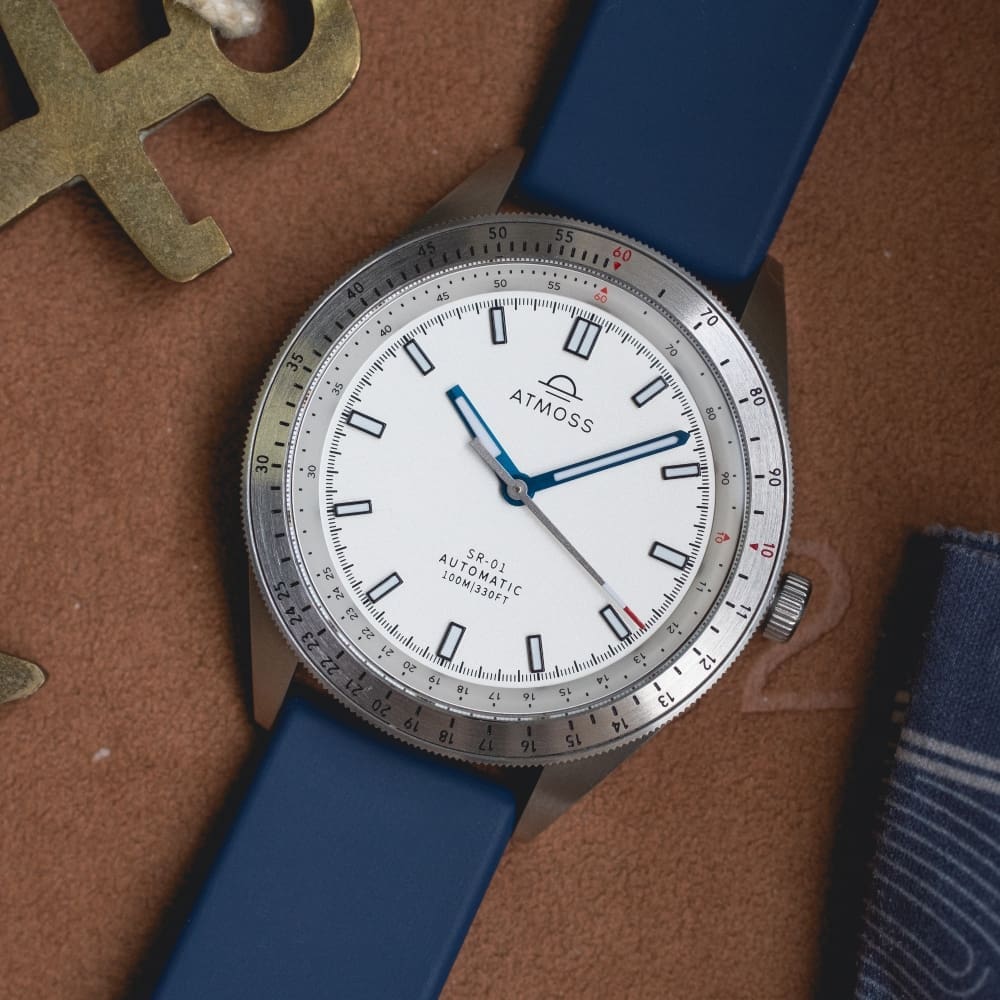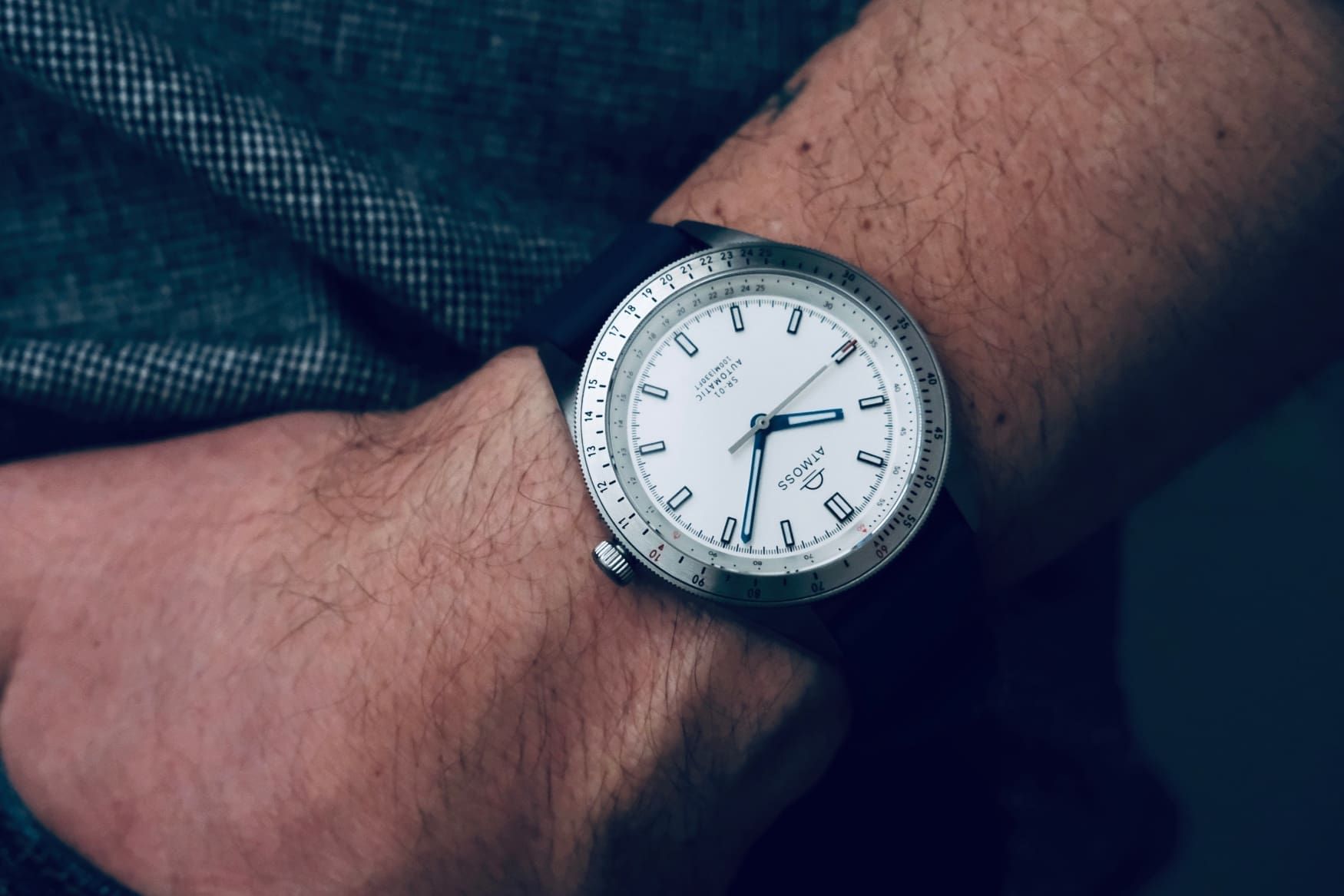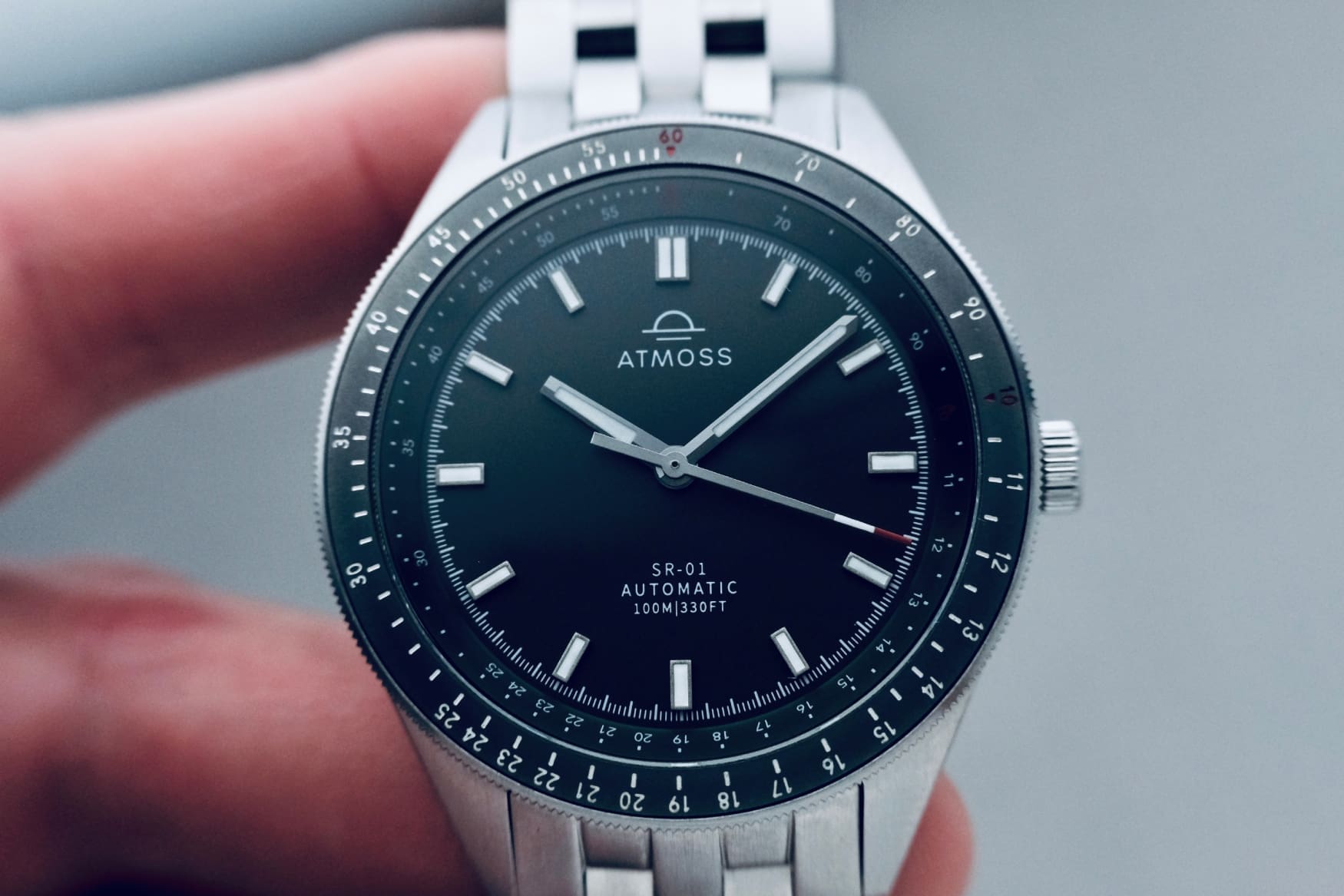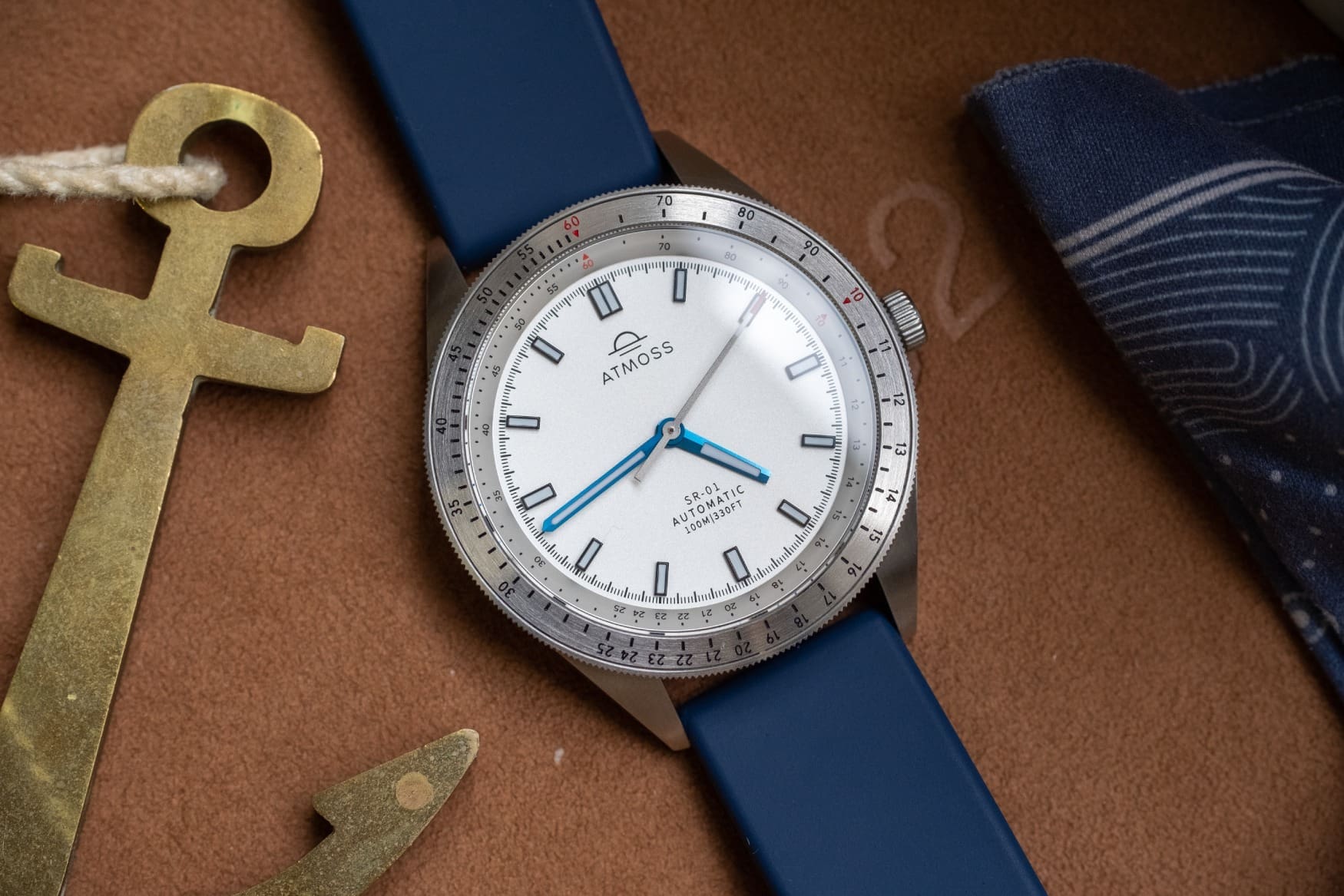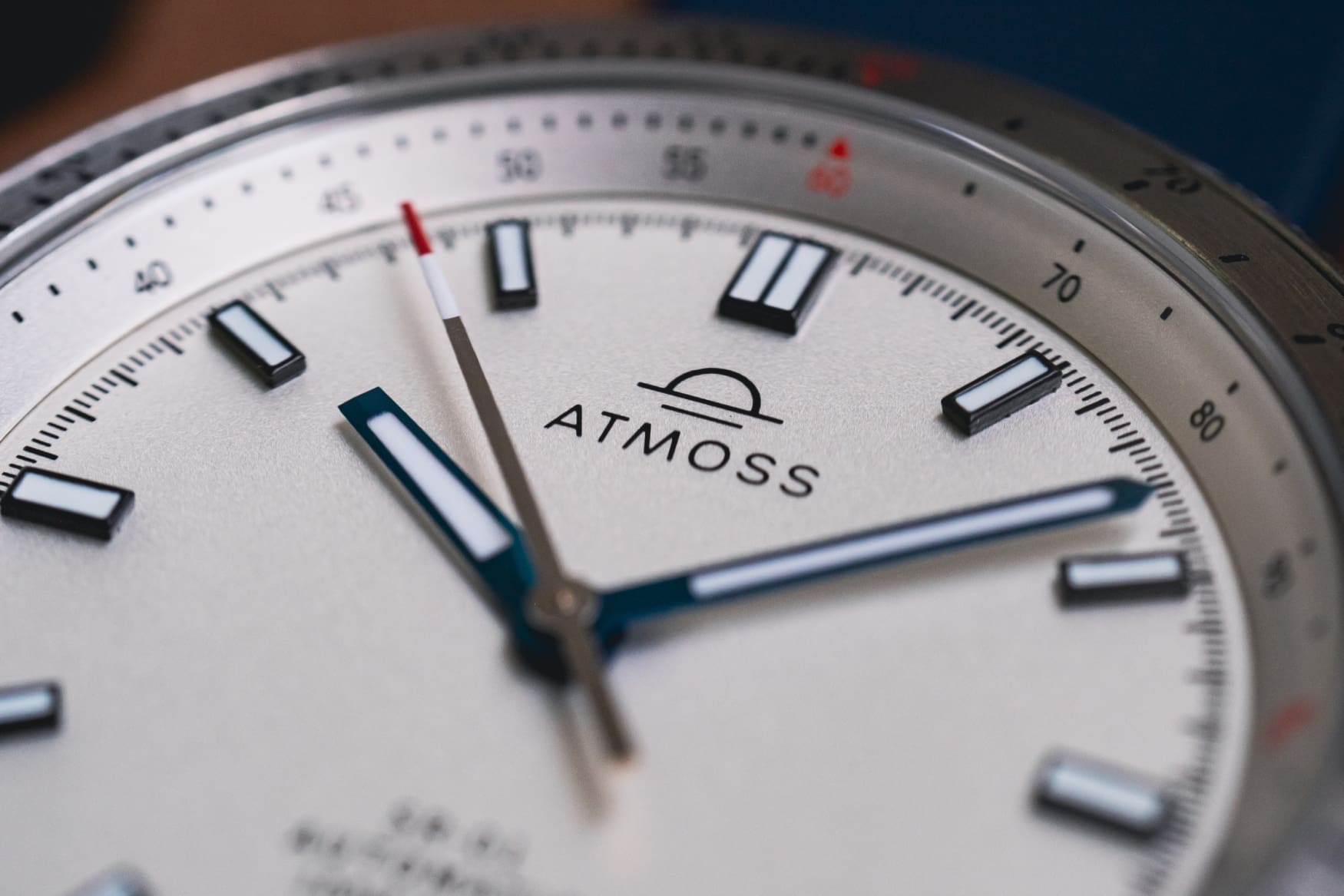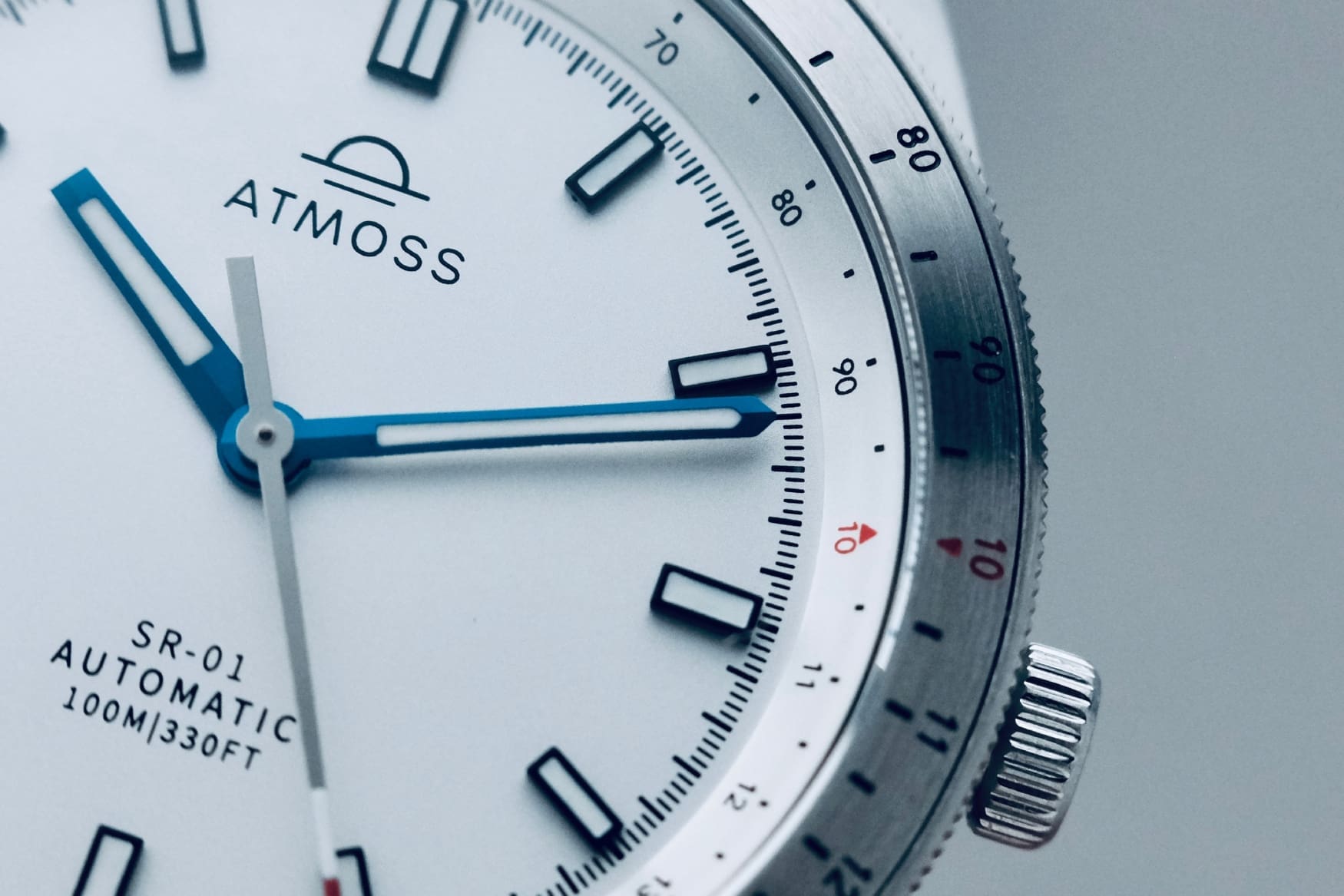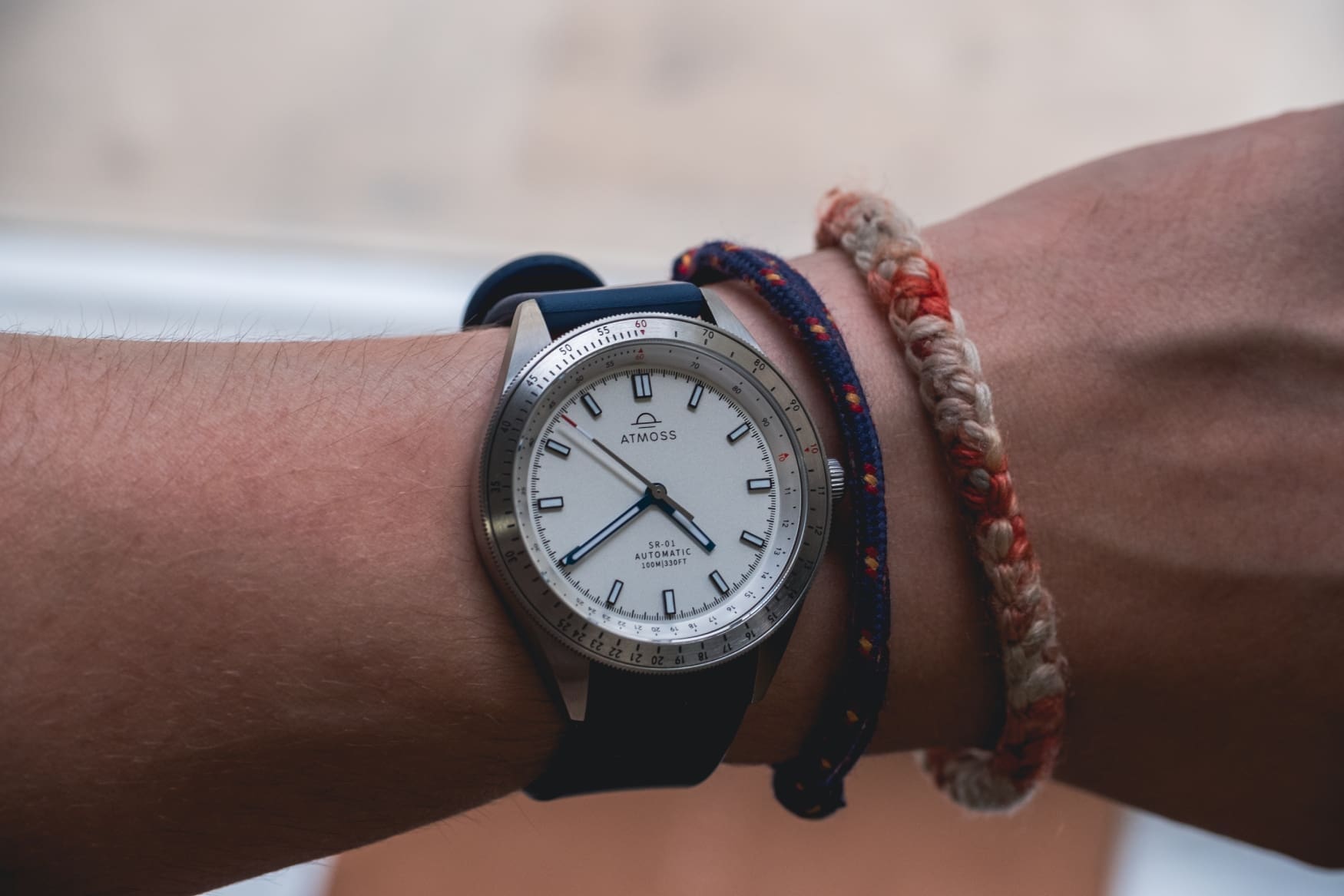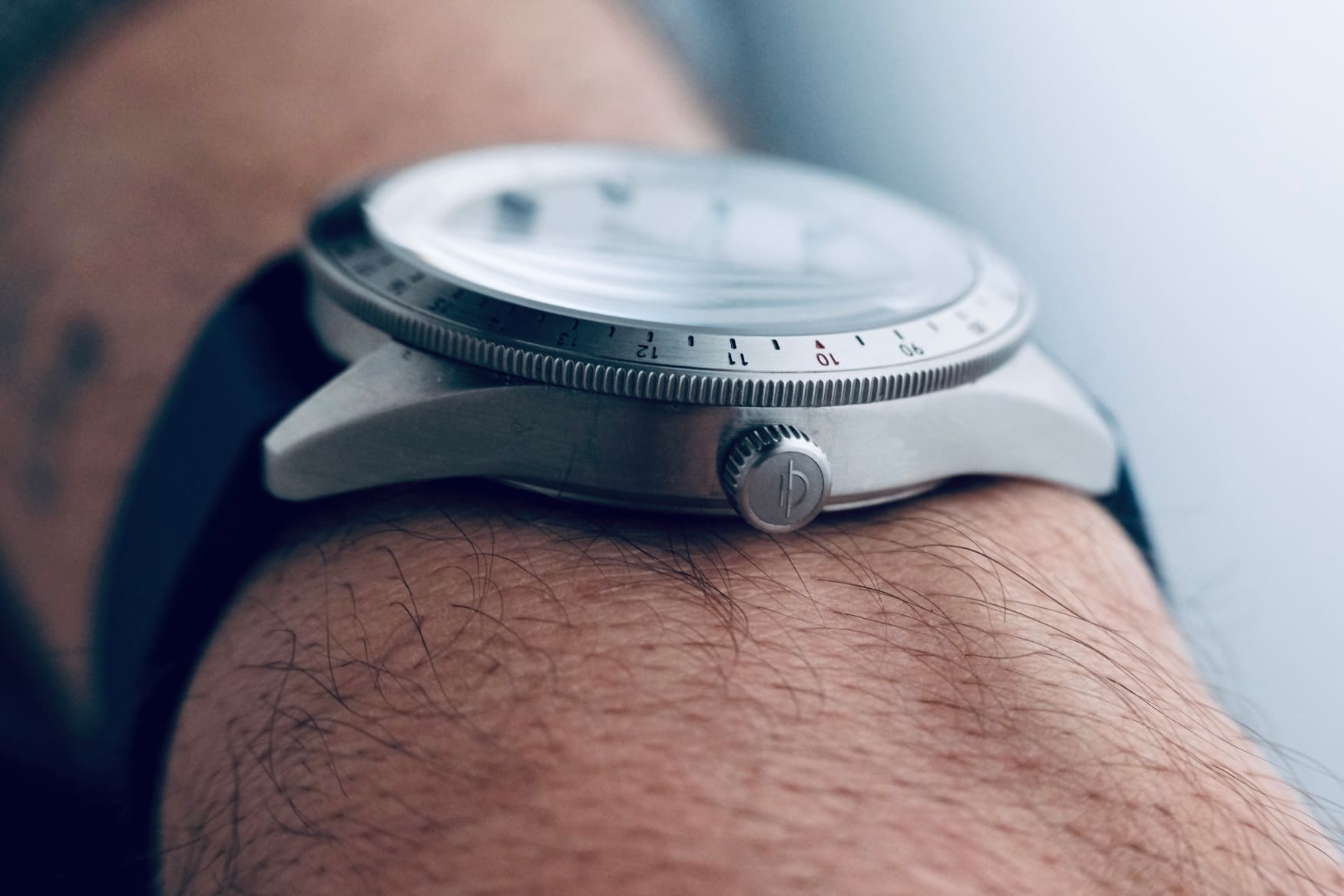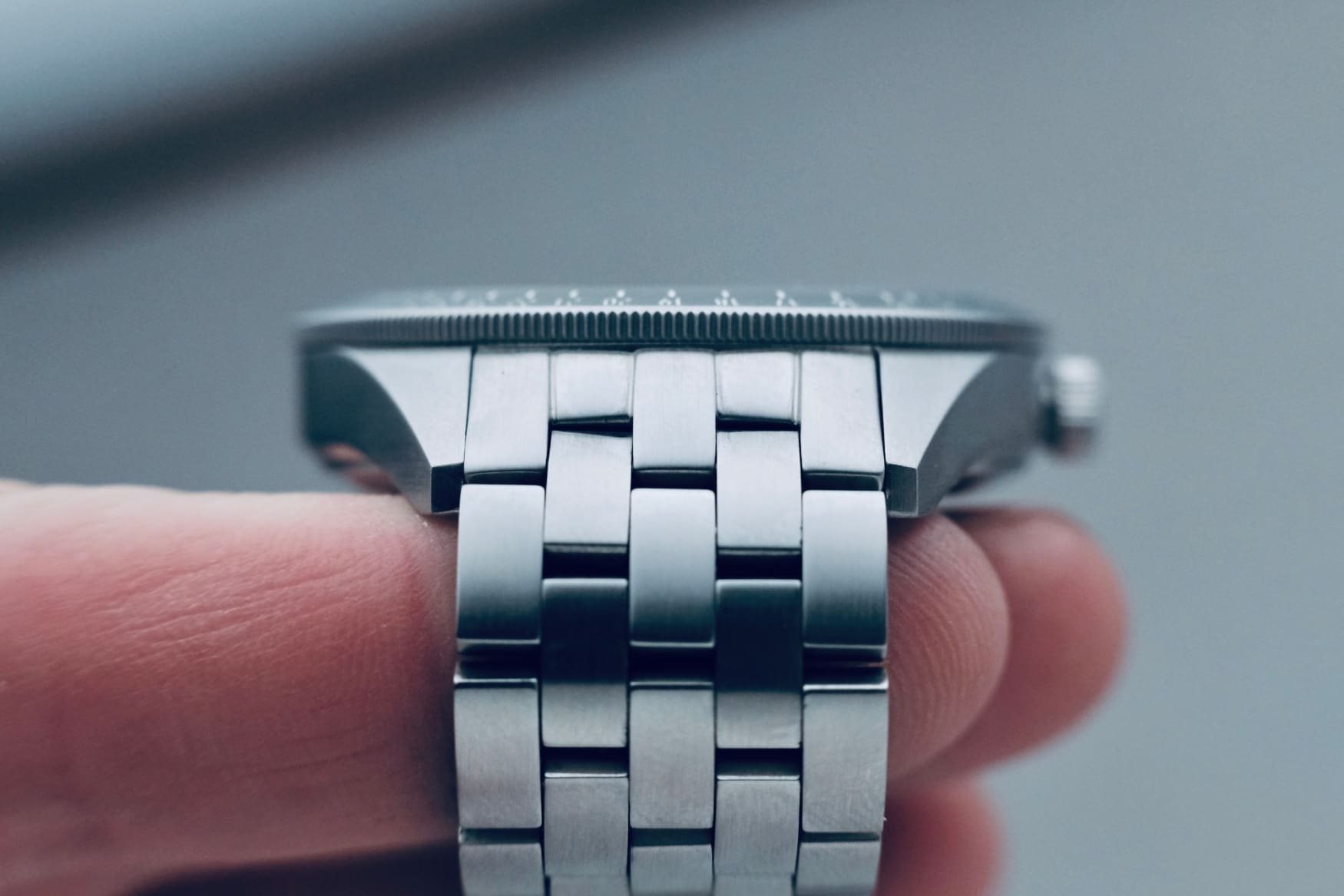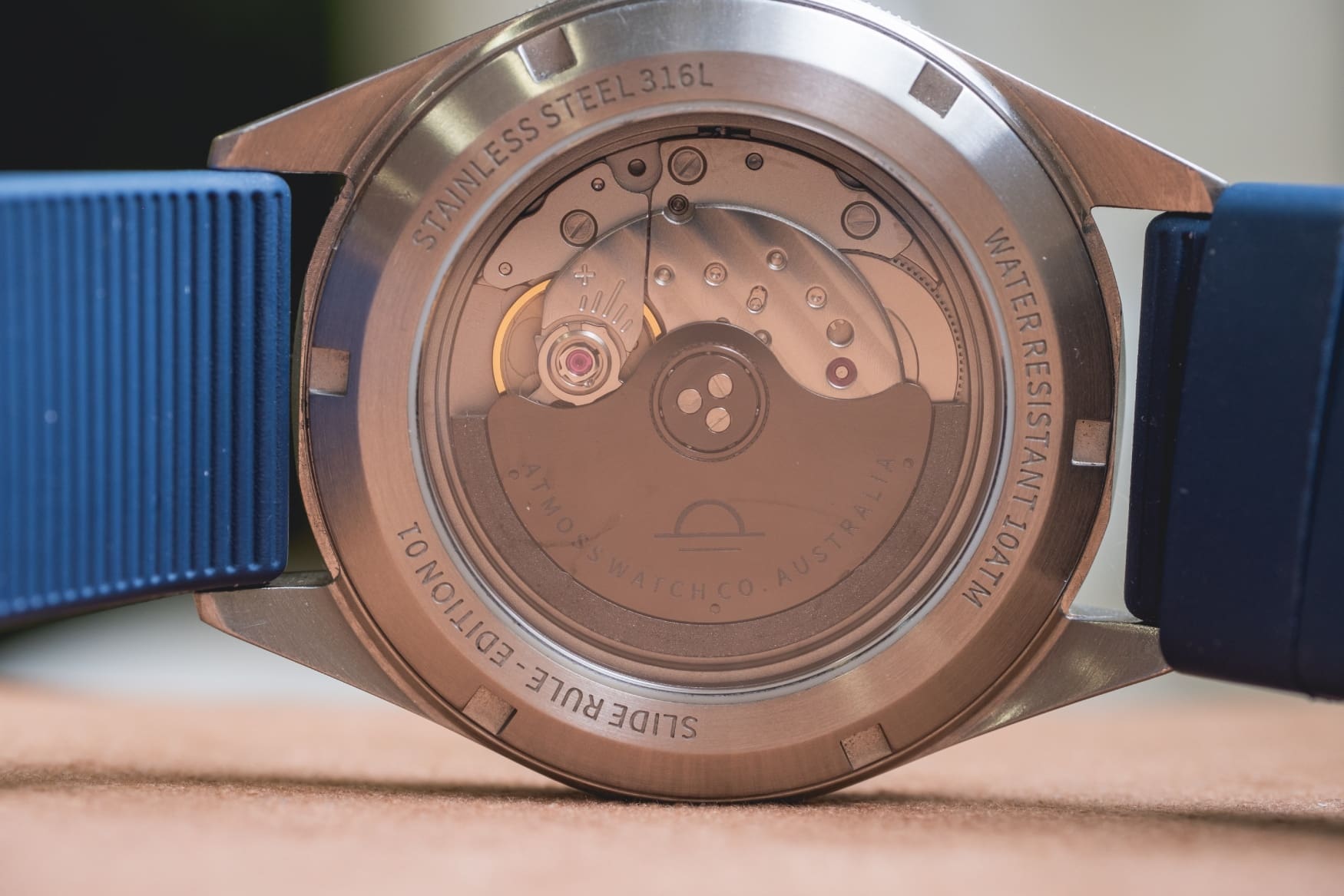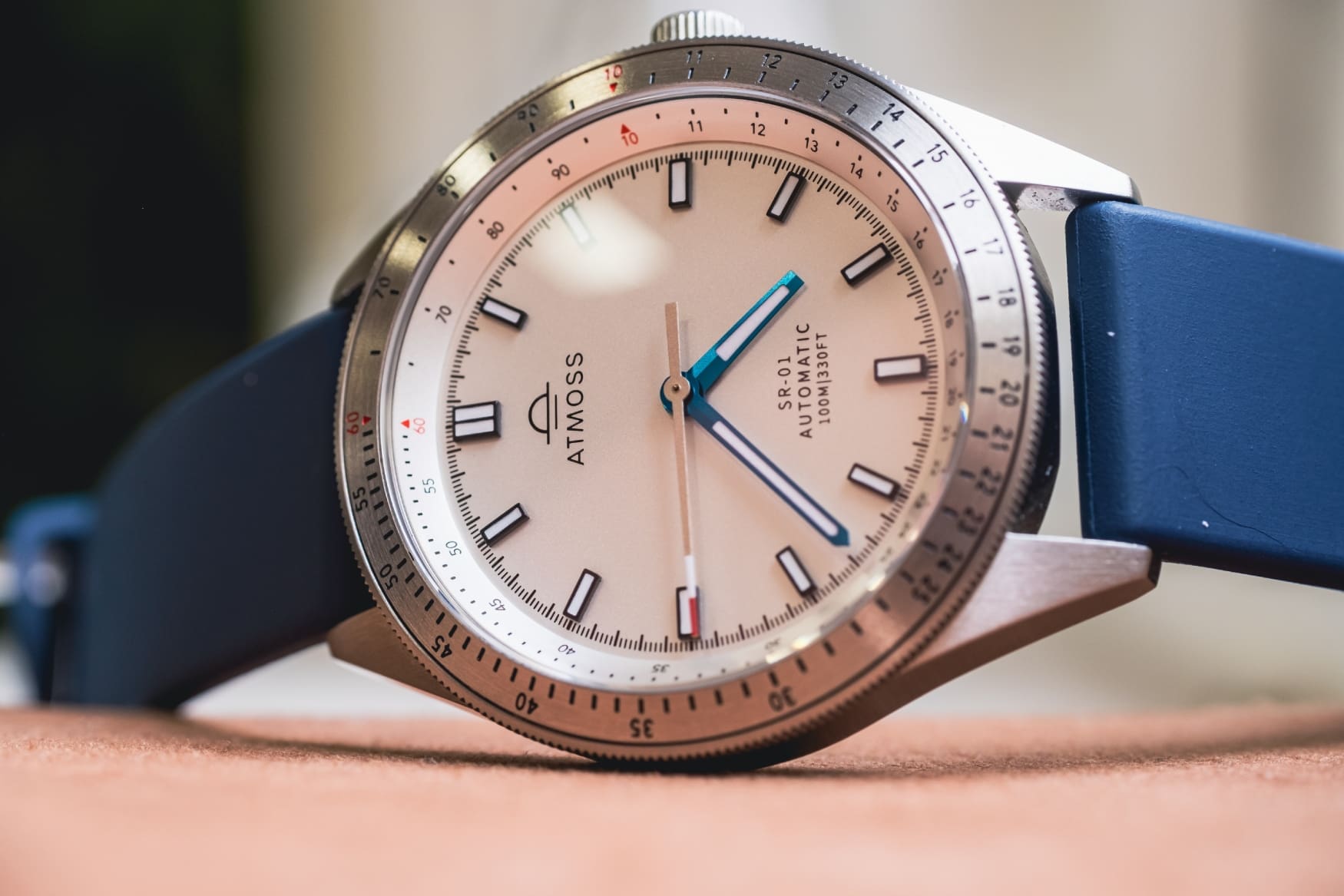MICRO MONDAYS: The Atmoss SR-01 may have set the benchmark for budget pilot’s watches
Borna BošnjakEditor’s note: Due to unforeseen circumstances, Warrick’s Atmoss project will have to be put on hold for the moment to ensure the products can be delivered to the desired standard once resumed. Follow @atmoss.watches on Instagram for the latest updates
Bringing an idea to reality is a daunting task, and when it comes to watches, presents its own unique series of challenges. Brisbane-based Atmoss, and its founder Warrick Bettany, faced them all, culminating in the launch of the Atmoss SR-01 Everyday Pilot’s Watch, the brand’s first-ever release. The SR-01 was born of a desire to simplify the idea of a watch for pilots, all while including a tool that was once crucial for them – a slide rule. I had the pleasure of speaking to Warrick about the process, and spent some time with the SR-01 for the last 10 days or so.
Q&A with Atmoss founder Warrick Bettany
Borna Bosnjak: With your background as both a pilot and a designer, creating a pilot’s watch seems sensible. But where did the idea of making watches come from in the first place?
Warrick Bettany: Outside of the design role, and flying planes, I’ve always been quite a hands-on person. I’ve actually spent a lot of time in furniture-making in my spare time – there’s something about the process of creating something purposeful from scratch that I find satisfying. The curse is, I can never really settle if I know there’s a fine detail missing, or something I’d like to change about a product or a design, and this is where the watches come in.
I’d been flying planes for a few years at the time, and was actually looking for a new pilot’s watch for myself. I was researching a lot of watches and there was always something that didn’t quite sit right with me, so I sat down and started sketching and designing. The idea of designing something new in a market that I’d admired for a long time really intrigued me. I also have a good friend who is a watchmaker here in Brisbane, so I’d consult with him on specs and materials which helped the process. On top of producing our first watch, I’d say I’ve learned a lot more about design and sourcing over the past four years than I have in my career before this, so it’s super exciting to be here and be able to share the results of our work with everyone who might appreciate it. On top of all of that, it’s a really great feeling to be able to build a product that’s designed to be permanent, and support an industry that’s been around for centuries, in a day and age when we’re taught to throw away and upgrade our devices every 12 months.
BB: What is the most difficult aspect of designing something from the ground up, a brand new model?
WB: The initial idea and concept often come pretty easy. We probably have about five more designs sitting in the pipeline to continue working on. Sometimes I’ll have an idea as I’m sitting in the car or out having a beer at the pub, so I’ll write down some notes and continue to work on it over the next few weeks. The hard part is being able to work the designs so that they can translate physically into production. In addition, you need to keep an eye on what the market is doing and what people are looking for in a watch, as they change quite often. If you design something a year ago, it might not be the right time to release it now or may need adjusting again.
BB: As a new brand launching their first design, what aspects of the watch are you hoping will carry your brand identity?
WB: I’ll try and summarise it in as few words as possible. Well-considered, high-spec watches with a casual, but functional feel. We generally focus firstly on the actual shape and fit of the watch, then build everything up from there. In our opinion, if the watch doesn’t wear well and do its job, then it pretty much negates the purpose of the design.
BB: What is your favourite aspect of SR-01?
WB: To me, it’s the shape and fit of the watch. It’s a 41mm case and it’ll fit well on both small and large wrists due to the taper of the lugs and curved profile that follows the contour of your wrist. On top of that, it’s the simplified take on the pilot’s slide rule that we’ve applied to the bezel. We felt that it’s a function that’s underappreciated in a watch. People sometimes think they aren’t useful, which is mainly because they often don’t take the time to learn how they work. As well as having great function in the cockpit, there’s a whole lot of other uses for them. You can calculate how long it will take to get somewhere at a given speed, perform currency conversions, use it to work out your average pace on a run – the original smartwatch I guess you could call it.
BB: The idea of a Kickstarter brand is becoming more and more popular. What are some of the difficulties in standing out from the crowd?
WB – You’re right. Initially I was hesitant of Kickstarter campaign idea because it felt a little strange. The more I thought about it though, the more I got on board. My thoughts on it now are that it actually gives you the opportunity to allow early supporters to jump on board and genuinely help you build the brand and be rewarded at the same time, as long as you take a considered approach and do it for the right reasons. I’d say the challenge is being able to separate yourself from being seen as a brand looking to create one watch and then vanish off the face of the earth. To which I’d refer back to the previous question where we mentioned our future designs in the pipeline. This is something we’re looking at well into the future with, so hopefully people appreciate that.
BB: What are some unexpected challenges in running an independent watch brand?
WB: One of the main challenges we had to overcome was navigating the land of watch manufacturers and finding companies that you can trust. Every manufacturer you talk to will say how easily achievable everything is, until is comes time to physically produce products. That was a a bit of a drawn-out exercise for us. Fortunately, we’ve been able to build up a network of suppliers and manufacturers over the last few years that we work with and trust to reliably produce the quality that we’re after.
The Atmoss SR-01 Everyday Pilot’s Watch
The dial
As mentioned before, the SR-01 isn’t your classic type A/B flieger-style watch. The design is as minimal as it can get for a tool watch, without compromising on utility. To contrast against the grained silver backdrop, the SR-01 uses bold hands and indices, outlined in blue and black, respectively. There are two details here that I’m especially fond of. The hands have a subtle bevel down the middle, only standing out at particular angles, while the tall applied indices add excellent depth to the otherwise plain expanse of the dial. I’m happy to report that the printing is minimal as well, with only the most necessary info making it onto the dial, rather than an entire spec sheet.
Rising steeply off the dial is the rehaut, with the inner ring of the slide rule printed on it and highlighting the 10 and 60 markers that are most often used for calculations. Since I’ve mentioned the slide rule, I’ll do my best to explain how it works. In their press materials, Atmoss promise it’s not that difficult, and after briefly fiddling with it, I can confirm that. One important thing to keep note of is that the numerals also represent decimal multiples – i.e. 10 stands for 1, 10, 100 etc. Keeping that in mind, the rest is simple.
For calculations of speed, you only need to match your desired speed (or its multiple) in units per hour on the outer ring to the 60 index on the inner ring. Next, look for your distance (or its multiple) on the outer ring and match it with the time unit on the inner ring. For multiplication, match one of the factors to the red 10 on the inner ring, look for the other factor on the inner ring, and the product (or its decimal multiple) will be matched on the outer ring. I will say, it’s a lot easier to do this with an actual slide rule in front of you.
The case
I’ll leave the actual on-wrist feel until a little later, as I need to commend Atmoss on their great case finishing, and the overall fit and feel of the SR-01. The very first thing I noticed when taking it out of the box was the sheer heft, though I’m happy to report no excessive top-heaviness on the wrist. Surfaces are brushed throughout, my favourite being the circularly brushed bezel insert which I’m a total sucker for. Warrick mentions that the bezel was among the more challenging things to get right – taking four revisions before the bezel action was perfect. What’s even more impressive is that my review unit is a pre-production model – the final production versions will have a revised tapering bracelet, going from 20mm to 18mm, as well as screwed links and extra holes of micro-adjust.
At 41mm in diameter, with the bezel adding an additional 0.5mm, the SR-01 is larger than the diameter I’m normally comfortable with (my wrist being 6.1 in/15.5cm) – at least on paper, that is. With a lug-to-lug measurement of 48.8mm and a thickness of 11.5mm including the slightly domed sapphire crystal, the SR-01 wears very well. For its size, and being a pilot’s watch, the crown is smaller than expected it to be, but its action is very satisfying both when interacting with the movement and screwing it down, ensuring 100 metres of water resistance.
The strap
During the Kickstarter campaign, the SR-01 will be accompanied by both the engineer-style stainless-steel bracelet and the FKM rubber strap. FKM rubber is a no-brainer on a watch like this, and mine stayed comfortable throughout the day, unlike lesser rubbers that cause excessive sweating. Reiterating the aforementioned upgrades for the production version, the steel bracelet will see a 2mm taper, screwed links and an improved clasp. Finally, owing to its 20mm lug width and minimal design, I fully expect the SR-01 to be a strap monster.
The movement
Visible through a sapphire caseback is the Miyota 9039, a high-beat Japanese automatic movement with 42 hours of power reserve that is the main competitor to ETA’s 2824. It’s also renowned for its slimness, which I’m sure contributed to the overall slender case of the watch, which I greatly appreciate. It does only offer unidirectional winding which introduces a little more rotor whine when compared to bidirectional winding, but it’s a trade-off many will be happy with considering the slim construction, including myself. My review unit ran rock-solid at -2 seconds per day, with healthy amplitude and zero beat error.
The verdict
Even though Atmoss has only been around for a year, the development of the SR-01 has taken the better part of four, and that effort was obvious the moment the watch came out of the box. Calling it an excellent first attempt would be doing it a disservice, as I would be equally as impressed had this been the release of a seasoned brand. At this price point (especially the early-bird pricing), I find it difficult to complain about the size of the crown or rotor noise too much, as I found neither to distract me from enjoying the SR-01 for the past week or so. With Warrick teasing already-existing future designs, I’m looking forward to seeing what’s next.
Atmoss SR-01 Everyday Pilot’s Watch pricing and availability:
The Atmoss SR-01 Everyday Pilot’s Watch is available now on Atmoss’ Kickstarter page.
Price: US$335 (Super Early Bird, limited to 100), US$351 (Early Bird, limited to 100), US$385 (Standard Kickstarter price), A$695 / US$465 (RRP)
Bundle prices: US$660 (twin pack, limited to 25), US$980 (triple pack, limited to 25)
| Brand | Atmoss Watches |
| Model | SR-01 Everyday Pilot’s Watch |
| Case Dimensions | 41mm (D) x 11.5mm (T) x 48.8mm (L2L), 41.5mm (bezel) |
| Case Material | Stainless steel |
| Water Resistance | 100 metres |
| Dial | White or black |
| Crystal(s) | Domed sapphire crystal with AR coating |
| Strap | Stainless steel engineer bracelet and FKM rubber strap matched to dial appliques |
| Lug Width | 20mm |
| Movement | Miyota 9039, automatic |
| Power Reserve | 42 hours |
| Functions | Hours, minutes, seconds |
| Availability | Now |
| Price | US$335 (Super Early Bird, limited to 100) US$351 (Early Bird, limited to 100) US$385 (Standard Kickstarter price) A$695 / US$465 (RRP) |




